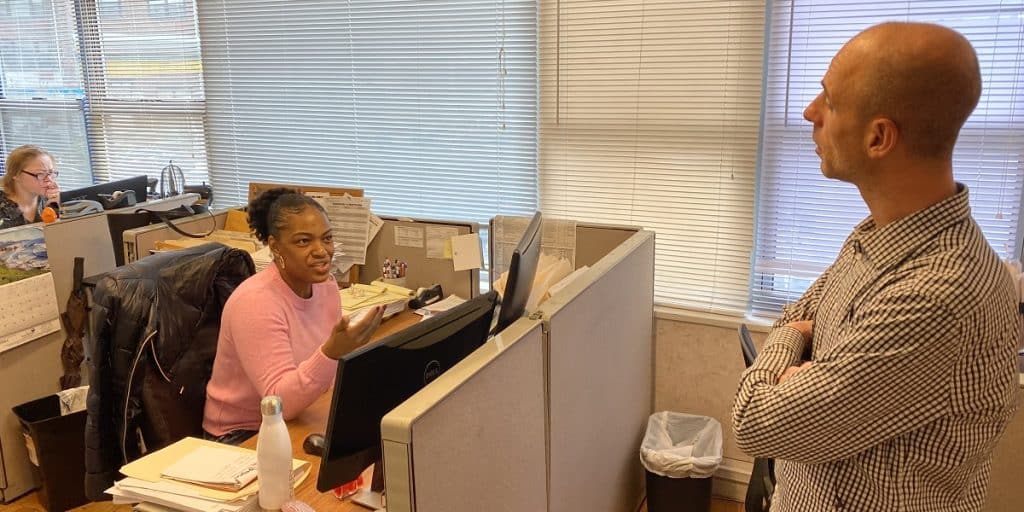
“The Mortgage broker has become the gatekeeper of the American Dream.” — John M. Robbins
If, as Diderot said, “Only great passions can elevate the soul to great things,” we can expect great things from the Mortgage Bankers Association (MBA) in the coming year, for no one has the passion of John Robbins for the mortgage finance industry. A lifelong mortgage banker, he has worked in all aspects of the business over a career lasting more than 30 years, and founded both American Residential Mortgage (sold to Chase in 1994) and American Mortgage Network, which sold to Wachovia. Along the way he has served on numerous boards and chaired multiple charitable committees to benefit his community and industry. His mentoring personality has helped scores of newcomers over the years (including at least one who came to write monthly for an industry-leading magazine in the mortgage origination business). In Chicago, Robbins became the chairman of the MBA, and he has strong feelings to share regarding the state of the industry, the priorities for the coming years, and the role of the mortgage originator in the business continuum of our real estate finance system.
First and foremost, he has an abiding respect for the point-of-sale professionals in the system, and it shows in his perception of them as the “gatekeeper of the American Dream.” This isn’t mere rhetoric—he has walked the talk over several decades, and he intimately understands the symbiosis between broker and banker. “It’s simple,” he explains, “The MBA and the NAMB share a common goal. We want to help people buy homes. Consumers use brokers because they are a great resource in finding the right loan for a family or an individual.” He sees a close working relationship between the two associations in the coming year because each has critical issues that threaten the integrity of the industry. “Mortgage brokers and mortgage bankers work together on many issues,” he said. “A good example is combating fraud. Instead of reacting to fraud, I encourage mortgage brokers to take a proactive approach. Many tools have been developed to raise fraud’s red flag, including fraud detection software, electronic reviews of property data using automated valuation models and loan-performance models, to name just a few.”
Tools are great, but they alone won’t get the job done: “Training is another means of combating fraud,” he noted. “Many firms are developing seminars and resource guides that help industry professionals understand what defines fraud, how it can be uncovered, how to stop it from recurring, and what lenders can do to mitigate losses if they become victims of mortgage fraud.” White-collar criminals discovered the ease with which mortgage fraud could be committed a long time ago, but law enforcement yawned until the stakes rose to unignorable heights in recent years. If allowed to grow unchecked, investors will simply leave the arena, making capital scarce and guidelines onerous.
The MBA is looking at all kinds of approaches. “Communication between the industry and law enforcement is also vital to fraud prevention,” John says. “The MBA has told Congress that some type of ‘safe harbor’ provisions for brokers, lenders, appraisers and other mortgage professionals could help protect the industry and consumers from fraud.” Not forgetting our friends and neighbors in Congress, he adds, “The enactment of national legislation is another possible solution to fighting mortgage fraud. Much has been said about implementing a national mortgage professional database that lists who has been approved by state or federal regulatory agencies, as well as who has been convicted of fraud in the past five years or had their license revoked in another state.”
In another example of the “Big Two” associations working together and in parallel, he notes, “Both the MBA and the NAMB have put together initiatives that foster training and education. MBA held its first National Fraud issues Conference this past May. This keeps everyone aware of industry changes, new legislation and enhanced means of tracking fraud. The NAMB is dedicated to providing programs that support the ongoing education, training and professional development of its members.”
Fluctuation in market size has kept many in the industry guessing over the last year or two. This is old hat to the baby boomers, who have lived with cycles since entering the business, but it is unsettling for newcomers. We are in a consolidating market at the moment, for both mortgage banks who are being acquired by bigger fish, and for mortgage brokers who are looking for strength in numbers by joining net branch companies. None of this, in Robbins’ view, stands to endanger the number of options and programs that will be available to mortgage brokers in the coming years. As to the health of the market, he feels, as do most of the rest of us, that the doom and gloom the newspapers like to talk about, including stories about bursting housing bubbles and rampant foreclosure scenarios, are more than a little overstated.
“This has been an unprecedented era in the housing market,” he says. “We’ve never seen a 13-year cycle before; the volume of the last three years cannot be sustained. However, what we are seeing now is a gradual return to ‘normal’ in that price appreciation is slowing and inventory is rising. As long as we have a healthy economy, housing will be healthy as well. Every young person I talk to wants to own a home and is figuring out how to make it happen.” The statistics regarding Generations X and Y buyers bear out his statement, since they are buying homes younger than their parents did, despite the increased prices. So even though those generations are much smaller than the baby boom, they will be making up for it by entering the market earlier.
The MBA chairman always has a full plate of things to accomplish during his or her time in office. Every third-year chairman is tasked with completing a three-year plan, and this is Robbins’ year. His plan is going to refocus the MBA’s efforts on a number of areas, especially in working with regulators and lawmakers to both understand and accommodate the realities of the marketplace.
Perhaps the most important effort he sees, since it affects so many of the others, is to correct a false impression: “Politicians have painted the real estate finance industry as one with ‘flawed integrity,'” he explains. “Newspaper articles are heralding mass foreclosures and other calamities. I want to self-regulate as much as possible to avoid more regulation forced upon us, because it’s always punitive.” Key to self-regulating is proposing legislation and regulatory language that is less onerous and more realistic that the verbiage we have come to expect from legislators. Or better yet, preempting legislation by adopting standard operating procedures that are more consumer-friendly, even if they intimidate the broker or banker.
The hottest potato in this basket involves the “D” word—disclosures. “How is the industry going to address issues like borrower risks associated with products like pay-option ARMs with negative amortization and advising borrowers appropriately about them?” he asks. “When you go to the pharmacy and pick up a prescription, either the pharmacist, the container or both tell you about possible side effects, right?” While he’s not saying we need to advise borrowers to “Discontinue use if payment shock develops,” or “In the event you experience an ARM-adjustment that lasts more than four hours, call your doctor,” but you get the idea. Disclosing is not a bad thing if it makes your borrower feel better about the transaction long after it is done. That borrower becomes a return customer.
The toughest example he cites deals with yield spread premiums. Brokers don’t like line items that tell borrowers how much they are making, which is somewhat understandable. Still, the fees are readily explainable, especially if the borrower understands they would be charged the same fees by a lender, even though they may not be disclosed the same way. YSPs are different, Robbins feels. “The issue is not the amount the broker has earned, but rather how much the upsell may cost the borrower in interest over the life of the loan.” He goes on to explain, “You may be dealing with people who won’t be in the house long, and paying the higher rate won’t have as much meaning to them. But if they are going to raise a family and stay there as empty nesters, the borrowers may prefer to pay the premium at $3,500 today rather than pay $26,000 over the life of the loan.” Fortunately, today’s borrowers have often experienced multiple refis and are far savvier than they used to be. That kind of borrower won’t have any trouble understanding the difference between “pay me now” and “pay me later,” and that’s what Robbins is talking about communicating to them.
A huge priority will be getting the FHA bill passed by the Senate. As described by Ken Harney, “The bill, which now awaits Senate action, would allow the FHA to offer zero-down-payment loans for the first time, increase permissible mortgage amounts substantially in high-cost markets, and provide low-interest rates and consumer protections that are rarely available from subprime mortgage lenders.” The new revitalization bill would, as Harney explains, “Effectively open the FHA marketplace to mortgage brokers, who are by far the largest source of home mortgages originated nationwide. With brokers able to offer both private-market subprime and FHA-insured mortgages, buyers with less-than-perfect credit will be able to directly compare FHA’s rates, fees and consumer protections with competing subprime loan offerings.” Robbins believes this is “incredibly important as we look to the future. We are looking at markets that are huge in size, and minority loans will be extremely important to those markets. FHA revitalization will be a key component in our ability to house low to moderate income Americans, and that’s our job.”
As the “Gatekeepers of the American Dream,” mortgage brokers must have a clear path to the capital needed to keep loans funding, and that means having a good working relationship with the nation’s mortgage banks. What can each party do to help the other? Robbins cites several things. From the mortgage banking side, he says, “Introducing technology to make the broker’s job more efficient is essential. We work with our broker customers so they can be more productive and spend their time helping customers, not doing paperwork. We also try to make them aware of shifts in the marketplace and give them the products that address changing demographics.”
From the mortgage broker’s side, he echoes a familiar theme: “Mortgage brokers and mortgage banks are partners,” he says. “This partnership is based on sound business practices, trust and integrity. Mortgage bankers want to fund the loans that brokers send them. Give us the documentation to do that.” Building relationships with your mortgage bank for the long term has other implications, as well, such as not shopping loans to a dozen different lenders. In this day and age of lenders having huge product menus it is far less necessary, anyway, and it drives mortgage bankers to distraction.
It will be a busy year for MBA, with RESPA reform, FHA revitalization, fraud control and GSE restructuring all on the table. Despite all there is to do, including mapping out the MBA’s efforts for the next three years, John Robbins expects to bond more closely with his counterparts at NAMB in order to create a more perfect relationship with that association. As John puts it, “The MBA and NAMB’s paths are undeniably intertwined. We’re on the same page on 90 percent of the issues, and old attitudes of exclusivity on both sides have all changed.”
Passion abounds in the hearts of the NAMB leadership and it lives in the marrow of the Mortgage Bankers Association. And if great passion truly elevates the soul to great things, expect that the funders of the American Dream and the “Gatekeepers of the American Dream” will accomplish much in the coming year. Their work is certainly cut out for them.
By James Hennessy
Have questions or need help?
Call us now at 800-220-LOAN
Request a call back or email us your questions!







